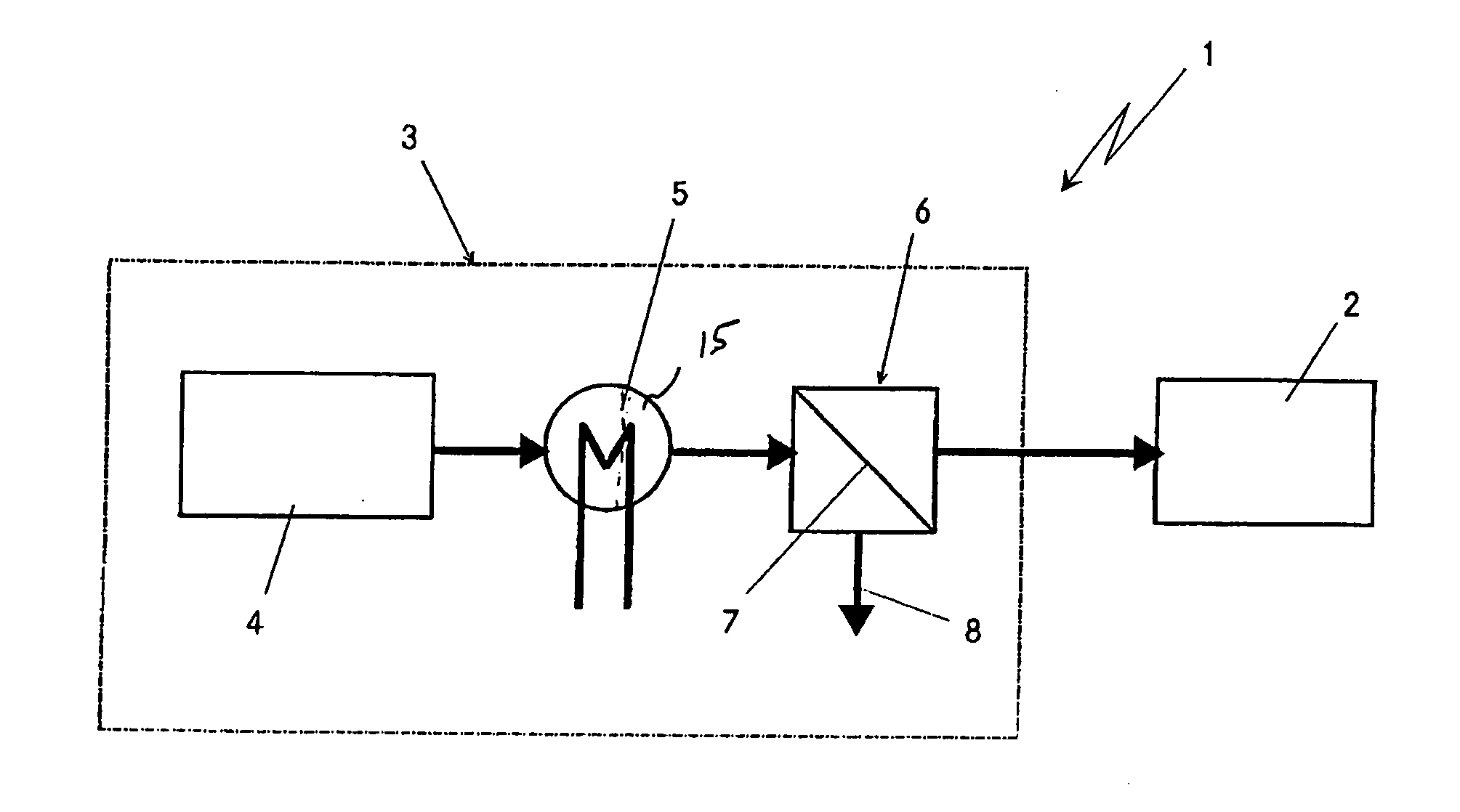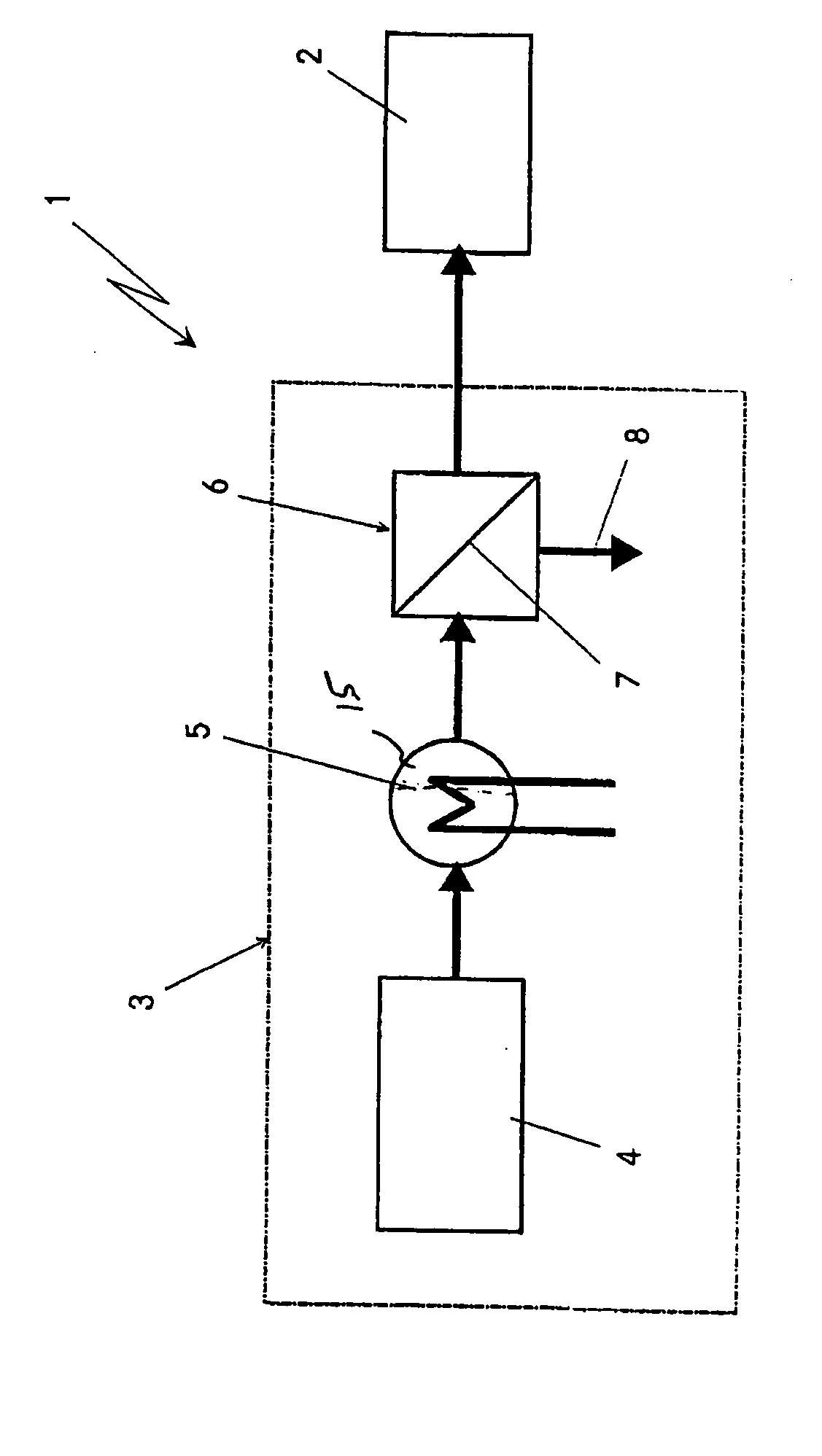Apparatus for generating virtually pure hydrogen for fuel cells
- Summary
- Abstract
- Description
- Claims
- Application Information
AI Technical Summary
Benefits of technology
Problems solved by technology
Method used
Image
Examples
Embodiment Construction
[0025] The fuel cell system 1 which is highly diagrammatically depicted in the only appended figure comprises a fuel cell stack 2, in particular based on a plurality of PEM fuel cells. Furthermore, the fuel cell system 1 comprises a highly diagrammatically depicted apparatus 3 for generating virtually pure hydrogen for operating the fuel cell stack 2. The apparatus 3 is subdivided into three main components, once again highly diagrammatically depicted.
[0026] The first component is a device 4 for reforming starting substances, which may be designed, for example, as an autothermal reformer or as a steam reformer. According to the exemplary embodiment illustrated here, this reformer 4, starting from a liquid hydrocarbon or hydrocarbon derivative, in particular petrol, diesel or methanol, together with water and if appropriate air as further starting substances, will generate a hydrogen-containing gas. Depending on the type of reforming, this hydrogen-containing reformate gas will leav...
PUM
 Login to View More
Login to View More Abstract
Description
Claims
Application Information
 Login to View More
Login to View More - R&D
- Intellectual Property
- Life Sciences
- Materials
- Tech Scout
- Unparalleled Data Quality
- Higher Quality Content
- 60% Fewer Hallucinations
Browse by: Latest US Patents, China's latest patents, Technical Efficacy Thesaurus, Application Domain, Technology Topic, Popular Technical Reports.
© 2025 PatSnap. All rights reserved.Legal|Privacy policy|Modern Slavery Act Transparency Statement|Sitemap|About US| Contact US: help@patsnap.com


